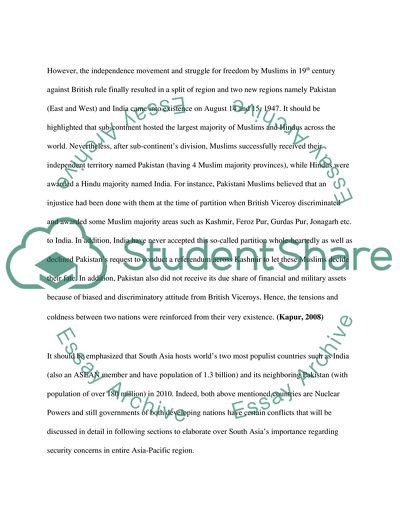Cite this document
(How Important Is South Asia to Security in the Broader Asia-Pacific Assignment, n.d.)
How Important Is South Asia to Security in the Broader Asia-Pacific Assignment. Retrieved from https://studentshare.org/politics/1740366-how-important-is-south-asia-to-security-in-the-broader-asia-pacific-region-what-does-this-tell-us-about-the-nature-in-thr-asia-pacific-region
How Important Is South Asia to Security in the Broader Asia-Pacific Assignment. Retrieved from https://studentshare.org/politics/1740366-how-important-is-south-asia-to-security-in-the-broader-asia-pacific-region-what-does-this-tell-us-about-the-nature-in-thr-asia-pacific-region
(How Important Is South Asia to Security in the Broader Asia-Pacific Assignment)
How Important Is South Asia to Security in the Broader Asia-Pacific Assignment. https://studentshare.org/politics/1740366-how-important-is-south-asia-to-security-in-the-broader-asia-pacific-region-what-does-this-tell-us-about-the-nature-in-thr-asia-pacific-region.
How Important Is South Asia to Security in the Broader Asia-Pacific Assignment. https://studentshare.org/politics/1740366-how-important-is-south-asia-to-security-in-the-broader-asia-pacific-region-what-does-this-tell-us-about-the-nature-in-thr-asia-pacific-region.
“How Important Is South Asia to Security in the Broader Asia-Pacific Assignment”, n.d. https://studentshare.org/politics/1740366-how-important-is-south-asia-to-security-in-the-broader-asia-pacific-region-what-does-this-tell-us-about-the-nature-in-thr-asia-pacific-region.


